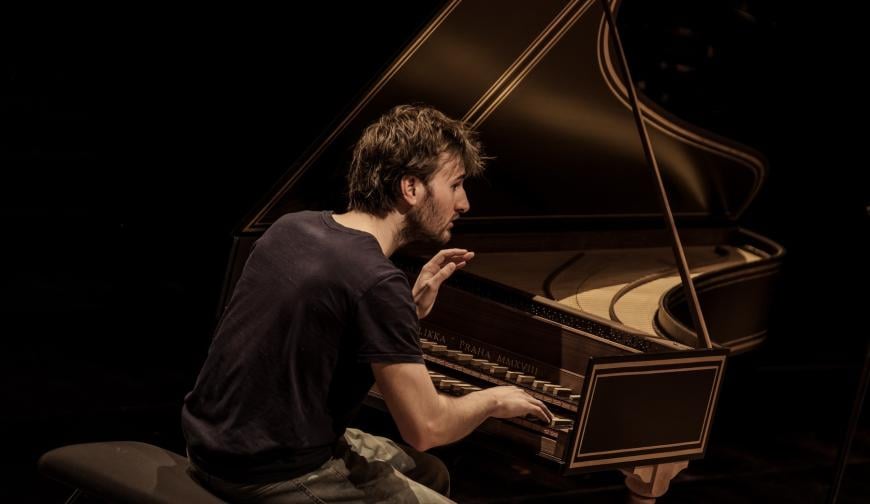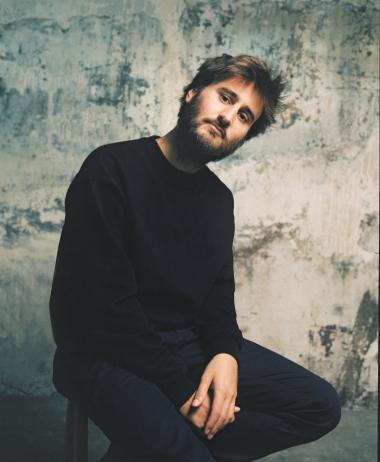
It’s an exciting time for the harpsichord. Today’s musicians can draw eclectically from a rich tradition of historically informed performance without being beholden to “authenticity.” The best harpsichordists working in the 21st century have a keen excitement about using the Baroque instrument in new and imaginative ways.
At the forefront of this movement is the French musician Jean Rondeau, who delivered a splendid recital at Cal Performances on Sunday, Nov. 5. The program, titled “Gradus ad Parnassum,” included selections from Rondeau’s latest album of the same name. The Latin phrase, which means “steps to Parnassus,” is the title of an influential counterpoint textbook by Johann Joseph Fux — published in 1725 and still used today — which directly inspired the subsequent composers on Rondeau’s album: Muzio Clementi, Haydn, Mozart, Beethoven, and Claude Debussy.

However, if the “Gradus” motto implies a lofty ambition of progress toward the highest ideal, Rondeau counters this teleological emphasis by reminding us not to think of the harpsichord as a merely Baroque instrument that was superseded by the modern piano. As he pointed out in his mid-concert remarks, the piano emerged in Mozart’s time, but the harpsichord by no means disappeared. And with his scintillating technique and deeply communicative playing, Rondeau demonstrated that there is much to learn from hearing this music on a less familiar instrument.
Rondeau is a player of deep personality, but he’s the opposite of flashy. He has the deep, monastic aura of a character like Rasputin, although he has reined in his signature disheveled hair in recent years. The recital opened with Fux’s Harpeggio, an improvisatory curtain-raiser which gave the impression of giving birth to music out of nothing. Probably the only piece on the program intended primarily for the harpsichord, Fux’s score is more of a skeleton, which the performer is expected to elaborate based on the harmonic template. Rondeau’s scales and arpeggios coruscated effortlessly, revealing his profound musical intelligence and sensitivity.
Without a break for applause, the Fux proceeded directly into Haydn’s Piano Sonata No. 31 in A-flat Major. While Fux’s piece unfolds freely and instinctually, Haydn’s employs the more rigid structures of classical form. But Rondeau applied his skills as an improvising harpsichordist to this sonata, adding delightful ornamentation to the repeat of the first-movement exposition and exploiting the timbral difference between the two keyboard registers to great effect. The same effortless quality was there, with the scales unrolling crisply and evenly, and the third movement came off with jaunty humor and a quirky, lilting rhythm.
You could understandably worry that music composed for the piano would sound monotonous or boring on the harpsichord, given the two instruments’ different mechanisms for producing dynamic contrasts. By and large, Rondeau proved that this was not the case. Haydn’s Adagio movement had a mournful, poignant quality, and contrapuntal elements received careful treatment. The slow movement of Mozart’s Sonata No. 16 in C Major — the “Sonata Facile” that practically every young piano student stumbles through — seemed less appropriate, the left-hand Alberti bass inevitably plodding on harpsichord.
The Haydn and Mozart sonatas were the keystones of the program, which was rounded out by preludes by Clementi and Beethoven and two shorter selections by Mozart, including the anguished D-minor Fantasia, whose harmonic connections to J.S. Bach were accentuated on the harpsichord. But one chromatically ascending motif in the piece is reminiscent of the famous “longing” leitmotif in Richard Wagner’s Tristan und Isolde — a clue that Rondeau is looking to the future as well as the past. As noted on the program, Mozart left the Fantasia unfinished, an important reminder that the past is always being rewritten, the future is always just out of reach.




